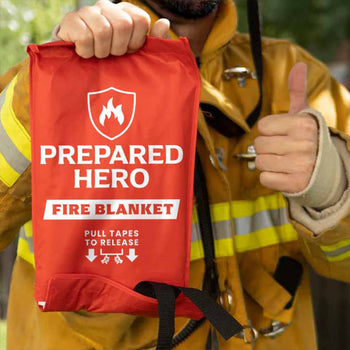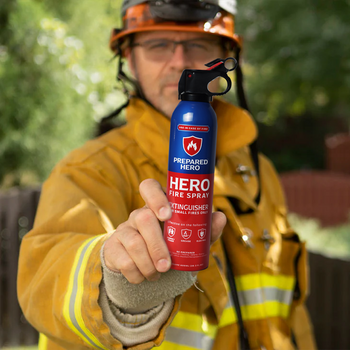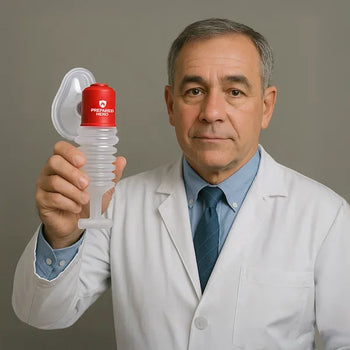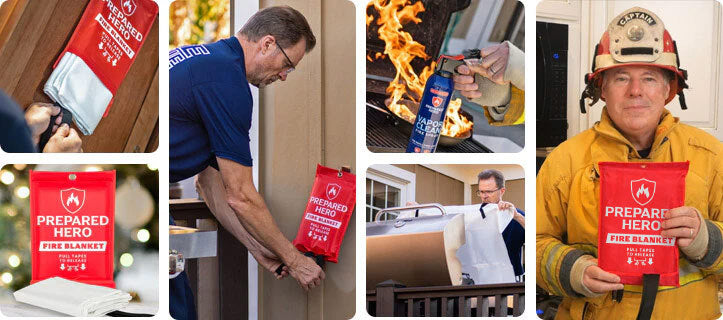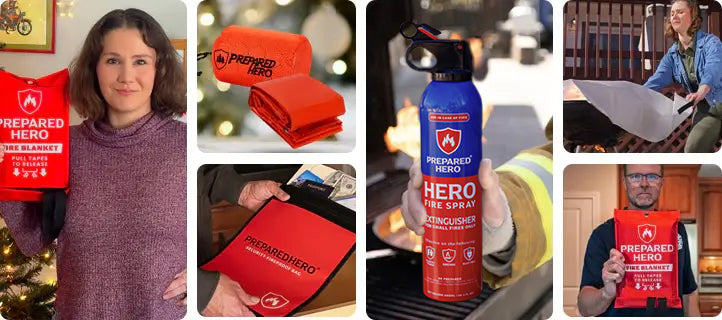Where you put your smoke detectors matters just as much as installing them. Proper placement makes sure they can detect...
Did you know? Cooking fires are the top cause of home fires and injuries, according to the NFPA (National Fire Protection Association). It's also the second cause of home fire deaths.
There are many kinds of kitchen accidents, from nicked fingers to burnt toast. But one of the most dangerous is a grease fire.
Knowing how to stop a grease fire is an essential homeowner's know-how. If you don't know how grease fires start and how to put them out, we're here to help.
Learn how a grease fire starts, how to put it out, and how to prevent it from starting.
What Is a Grease Fire?

As the term implies, a grease fire is a type of fire that occurs when cooking oil or grease becomes too hot. Heating oil or grease will first cause it to boil. Then, it will smoke and finally ignite.
Kitchen grease comes from cooking fats like butter or bacon. They can also come from plant matter (e.g., vegetable oil). The grease usually accumulates inside ovens and pans, especially if you don't regularly clean them.
Also known as class F fires, grease fires are significant fire hazards at home. They can quickly start and get out of control faster. Plus, they can spread extremely quickly.
Why Does a Grease Fire Start in the Kitchen?

Here are some common reasons why a grease fire starts in the kitchen:
- Increasing the heat too quickly and overheating the oil.
- Putting frozen food in hot oil, causing the water to smoke.
- Leaving boiling oil unattended.
- Leaving a grease-filled pan in a heated oven for too long.
Grease fires can start in as fast as 30 seconds, so do not leave your kitchen until you finish cooking and the hot equipment has cooled.
In addition, grease fires are dangerous because they're fueled by liquid that can quickly spread and splash to other kitchen areas. Plus, research says that 10% of cooking fires spread at home beyond the cooking area. As a result, they cause massive damage and serious injuries.
How Does a Grease Fire Start in the Kitchen?
- First, the oil boils.
- Next, the oil releases smoke.
- Finally, the oil catches on fire.
Here's how a grease fire starts in the kitchen:
1. First, the oil boils.

A grease fire starts when your cooking oil or fat becomes too hot. Oil starts to boil when it reaches its boiling point, which is determined by its temperature and pressure.
Most cooking oils have a smoking point of around 450°F, while most animal fats like lard start to release smoke at 375°F.
Warning: oils can reach their smoking points faster than expected.
2. Next, the oil releases smoke.

After oil reaches its smoking point, it releases smoke. The smoke means the oil is overheating and may soon catch fire. It also warns you that the oil needs to be removed from the heat.
3. Finally, the oil catches on fire.

If the oil continues to overheat and release smoke, it will eventually catch fire. This happens because of the ignited vapor and droplets from the boiling oil.
A grease fire can be extremely dangerous because it’s difficult to control and can spread quickly. To prevent grease fires in the kitchen, use caution when cooking with oil, keep a fire extinguisher nearby, and know how to put out a grease fire if one occurs.
Smoking Points for Common Cooking Oils
As mentioned above, a grease fire starts once cooking oil reaches its smoking point.
Here are the smoking points of the most common oils in the kitchen, so you can prevent them from reaching this dangerous point:
| Cooking Oil | Smoking Point |
| Extra-Virgin Olive Oil | 350°F |
| Butter | 350°F |
| Lard | 375°F |
| Canola Oil | 400°F |
| Vegetable Oil | 400°F |
| Safflower Oil | 450°F |
| Peanut Oil | 450°F |
How to Put Out a Grease Fire
- Turn the heat off.
- Cover the pot using a metal lid.
- Pour baking soda on the fire.
- Use a fire extinguisher or spray.
- Get out and call 911.
Tons of people cook with oil. From deep-frying to pan-frying, we just love eating our favorite food with that extra crunch. Plus, frying is one of the easiest ways to cook food.
As easy as it is, using oil can pose significant dangers. So, you must know what to do in case it ignites.
Here's how to put out a grease fire in the kitchen:
1. Turn the heat off.

Don't move the pot. You might splash yourself or other areas with burning oil if you move it. This can cause significant damage and injuries.
2. Cover the pot using a metal lid.

Without oxygen, fires can't burn down houses. Covering the pot or pan with a lid (with the heat off) starves the fire of oxygen. As a result, the fire will stop. Remember to use a metal lid since too much heat can break a glass lid.
Throwing the pot outside might seem logical, but it might splash burning oil on you, your kitchen, and anything outside.
Warning: pouring water can spread the fire. So, never pour water on a grease fire.
3. Pour baking soda on the fire.

If the steps above don't do the trick, pour baking soda into the fire. However, baking soda can only put out small grease fires. If there's a huge grease fire, do the next step instead.
Pro tip: flour looks like baking soda but won't react the same way. Only baking soda can help you put out a small grease fire.
4. Use a fire extinguisher or spray.

Use a fire extinguisher if baking soda can't put the grease fire out. However, this should be your last resort since a fire extinguisher will contaminate your kitchen. Still, it's better than not putting out the fire at all.
While fire extinguishers help, they can be expensive, heavy, and hard to store. The residue from the fire extinguisher is also toxic and hard to clean up.
Use a fire spray if you want a more affordable, lightweight, and convenient way to put out a fire in seconds.
The Prepared Hero Fire Spray is an easy-to-use alternative to heavy and bulky fire extinguishers.
This fire spray will help you deal with minor fire accidents and stop them before they turn into big disasters.
Plus, Prepared Hero's fire spray is biodegradable and non-toxic. Unlike a fire extinguisher, you can safely use it around your family and pets. It's also eco-friendly, so you're helping save the environment.
Here's a table summarizing the differences between Prepared Hero's fire spray and a regular fire extinguisher:
| Prepared Hero’s Fire Spray | Regular Fire Extinguisher |
| Lightweight, easy to carry | Heavy, hard to carry |
| Easy to store | Needs more space for storage |
| 100% biodegradable | Mostly made of non-biodegradable materials |
| Non-toxic | Toxic |
| Easy to clean | Hard to clean |
| Safe for kids and pets | Not safe for kids and pets |
5. Get out and call 911.

If the fire can’t be controlled or put out, get out. If family members are inside your house, ask them to get out. Then, call 911 and tell them what happened. Wait for the authorities to arrive.
How to Prevent a Grease Fire

Prevention is always better than uncontrollable flames. Here's how to prevent a grease fire:
- Never leave the stove, oven, fryer, or other cooking devices unattended.
- Don't leave the kitchen until you're done cooking and the hot kitchen equipment has cooled.
- Carefully put food in hot oil so the oil doesn't splatter.
- Don't put frozen food in hot oil.
- Drain all moisture from food before putting it in hot oil.
- Let your oils heat up slowly. Never put them on high heat right away.
- Do not overheat the oil.
- Turn the heat down once you notice smoke or a burning oil smell.
- Regularly have your vents, air filters, and kitchen fans cleaned.
- Clean your oven, pans, and pots thoroughly, so they don't accumulate grease.
- Have an active fire sprinkler system in place.
- Install a kitchen fire suppression system if possible.
Frequently Asked Questions
How long does it take for a grease fire to start?
It takes about 30 seconds for a grease fire to start. So, you shouldn’t leave cooking oil on heat unattended or leave the kitchen until you finish cooking and the hot tools have cooled.
What puts out a kitchen grease fire?
Covering the fire with a metal lid can put out a kitchen grease fire. If not, you must use baking soda (small fires) and fire extinguishers (big fires) to put out a kitchen grease fire. If the grease fire gets out of control, call 911.
Is it ok to pour water on a grease fire?
It is not ok to pour water on a grease fire. Water is denser than grease, so it will go underneath. Then, water vaporizes, produces steam, and sends hot grease into the air. AS a result, it spreads the grease fire.
What is the first step when your kitchen has a grease fire?
The first step when your kitchen has a grease fire is turning off the heat. Doing this removes one of the three things feeding fire― heat, oxygen, and fuel.
What 2 things should you never put on a grease fire?
The two things you should never put on a grease fire are water and a wet towel. Contrary to popular belief, these don't help because they spread grease fire. Use a fire extinguisher or spray to put out a grease fire instead.
What is the quickest way to put out a grease fire?
The quickest way to put out a grease fire is to cover it with a metal lid. Doing this starves the fire of oxygen. Eventually, the fire will put itself out. Remember not to use a glass lid because it might shatter due to excess heat.
Conclusion

Grease fires are dangerous. But with proper practices and tools, they can be prevented. While it's impossible to foresee when a grease fire will start, you can be prepared if it does.
Assembling a fire kit with an emergency fire blanket, fire protection gloves, fire spray, and a smoke mask prepares you for a grease fire. Go to Prepared Hero and shop for fire safety tools now!


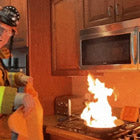 Fire
Fire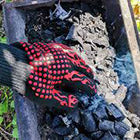 Safety
Safety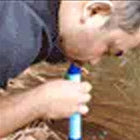 Survival
Survival Protection
Protection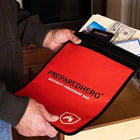 New
New Scouting America
Scouting America
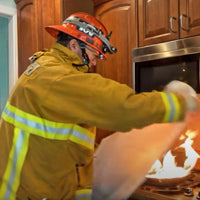 Fire
Fire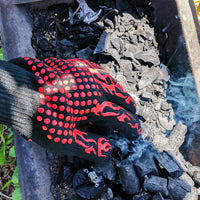 Safety
Safety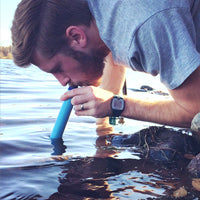 Survival
Survival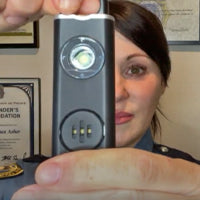 Protection
Protection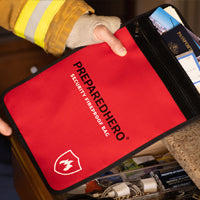 New
New
